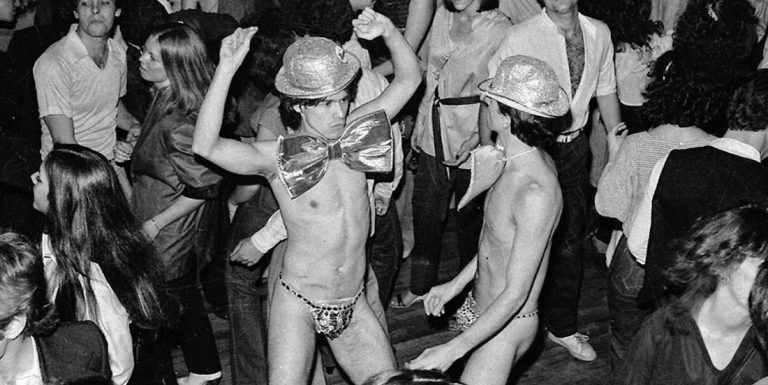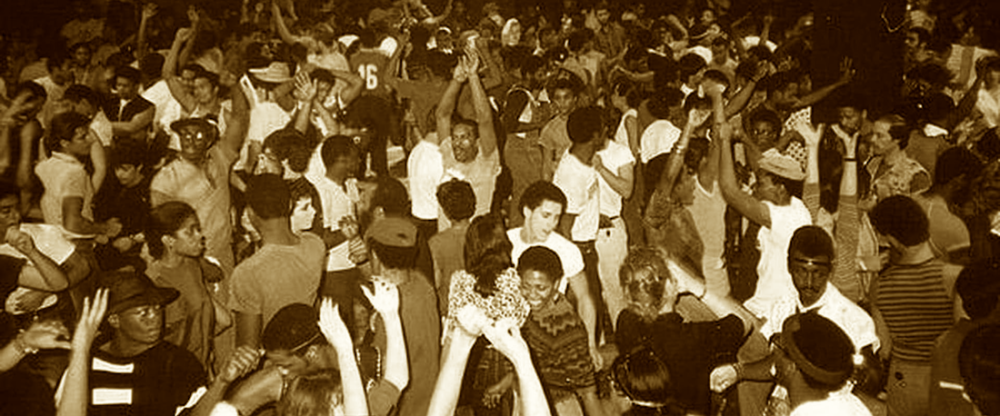
The iconic disco’s meteoric rise and fall redefined nightlife, sexuality, and celebrity culture—leaving an indelible mark on the city’s soul.
New York, N.Y. — In the late 1970s, Studio 54 exploded onto Manhattan’s nightlife scene, forever changing the way New York danced, mingled, and dreamed. Though its original doors closed in 1980—three years before I arrived in the city—the club’s myth endures.
This feature explores the dazzling heights and bittersweet afterglow of Studio 54, and what its absence meant for those who arrived just a little too late, as the city’s other legendary spaces—St. Mark’s Baths, Uncle Charlie’s, The Saint—carried the torch in their own ways.
A Velvet Rope Divides the Decades

When Studio 54 opened in April 1977, it was more than a nightclub—it was a phenomenon. The club’s founders, Steve Rubell and Ian Schrager, envisioned a space that pulsed with the energy of New York’s gay clubs, blending gay, bisexual, and straight patrons into an intoxicating mix.
———-
The velvet rope outside was both invitation and barrier, a symbol of exclusivity that made entry as coveted as a front-row seat at a Broadway premiere.
———–
Inside, the club was a fever dream of theatricality. Special effects—fluttering fabric flames, strobe lights, and the iconic Man in the Moon with a Cocaine Spoon—transformed the dance floor into a stage. The crowd was a living tableau of celebrities, artists, and unknowns, all cast by Rubell himself: “If it gets too straight, then there’s not enough energy in the room. If it gets too gay, then there’s no glamour. We want it to be bisexual. Very, very, very bisexual.”

The Night I Missed—and the City That Changed
I arrived in Manhattan in 1983, three years after Studio 54’s original incarnation ended with the infamous “End of Modern-day Gomorrah” party.
The club’s second act continued until 1986, but the magic had faded. By then, the city’s nightlife was shifting.
The St. Mark’s Baths, just a block from my apartment, was still open, a relic of another era.
Once a Victorian Turkish bath for Russian-Jewish immigrants, it had become the world’s largest gay bathhouse by the early 1980s.
Its closure in December 1985, under the shadow of the AIDS crisis, marked the end of a certain kind of freedom.

The Saint: The Vatican of Disco
If Studio 54 was the city’s most famous disco, The Saint was its most spectacular. Opening in September 1980, The Saint was a members-only gay club in the East Village, renowned for its planetarium-style dome, state-of-the-art sound system, and massive light shows. It was a cathedral for dance, where bodies moved in sync beneath a swirling universe of lights. For many, The Saint represented the next chapter—a place where the spirit of Studio 54 lived on, even as the city outside grew more anxious, more uncertain.

Uncle Charlie’s: Where the Music Played On
Meanwhile, Uncle Charlie’s offered a different kind of refuge.
Located in Midtown East, it became a beloved piano bar and lounge, drawing Broadway performers and their fans for open mic nights and cabaret tunes.
In a city that was losing some of its wildest spaces, Uncle Charlie’s thrived on intimacy and camaraderie.
“We’re a very comfortable place to stay. Yet you never feel alone—when a stranger comes in, people talk to you. It’s a friendly place,” said owner Michael Ng.
The Legacy: More Than Just a Nightclub
What made Studio 54—and its contemporaries—so transformative? It wasn’t just the music or the celebrities. It was the sense of possibility, the blurring of boundaries, the idea that for a few hours, anyone could be someone else—or truly themselves. The club’s design team, many of whom were gay men, brought artistry and innovation to every detail, from the architecture to the sound system. Dancers from Alvin Ailey’s company performed on opening night. Artists like Grace Jones, Donna Summer, and Sylvester electrified the crowd.
But Studio 54 was also a mirror of its time: a place where excess and liberation coexisted, where the city’s creative energy met its darker impulses. The club’s closure, following Rubell and Schrager’s arrest for tax evasion, was a harbinger of change. The AIDS epidemic, economic shifts, and new social codes would soon reshape nightlife—and the city itself.

The Nightlife That Followed
After Studio 54, New York’s nightlife adapted. The Saint became a sanctuary for a new generation of dancers. Uncle Charlie’s kept the music alive, one piano ballad at a time. And the memory of Studio 54 lingered, inspiring new clubs and cultural moments, but never quite replicated.
For those who arrived in Manhattan after 1980, the legend of Studio 54 was both inspiration and lament. We danced in other clubs, found our own tribes, and made our own memories. But we always wondered what it would have been like to step past that velvet rope, into the most famous disco in the world.
Audio Summary (75 words)
Studio 54 redefined New York nightlife in the late 1970s, blending sexuality, celebrity, and creativity in a way the city had never seen. Though its original era ended in 1980, the club’s influence shaped the venues that followed, from The Saint’s spectacular dance floor to Uncle Charlie’s welcoming piano bar. For those who arrived too late, Studio 54 remains a dazzling legend—a reminder of a city, and a freedom, that danced on the edge of possibility.
#Studio54 #NYCNightlife #DiscoHistory #LGBTQCulture #NightclubLegends
#ManhattanMemories #SaintNYC #UncleCharlies #DanceFloorHistory #VelvetRope
TAGS: Studio 54, New York nightlife, LGBTQ history,Uncle Charlie’s, Manhattan clubs,
The Saint, disco era, celebrity culture, St. Mark’s Baths, NYC history, dance clubs, 1970s, 1980s
